 |
by Allison Arieff on (#6FVDV)
His official title is vice president of regulated reporting solutions. But really, Billy Scherba is a carbon accountant. At Persefoni, a platform for climate management, Scherba works with companies to measure, manage, and disclose their contributions to climate change. Carbon accountants help companies understand what data matters to their carbon footprint, how to collect that...
|
MIT Technology Review
| Link | https://www.technologyreview.com/ |
| Feed | https://www.technologyreview.com/stories.rss |
| Updated | 2025-12-16 23:18 |
 |
by Ananya on (#6FVDT)
On a bright sunny day in August, in a second-floor room at the Gandhi Bhavan Museum in Bengaluru, workers sit in front of five giant tabletop scanners, lining up books and flipping pages with foot pedals. The museum building houses the largest reference library for Gandhian philosophy in the state of Karnataka, and over the...
|
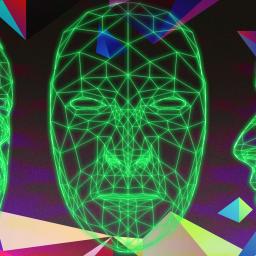 |
by Peter Dizikes on (#6FV2K)
It's often believed that authoritarian governments resist technical innovation in a way that ultimately weakens them both politically and economically. But a more complicated story emerges from a new study on how China has embraced AI-driven facial recognition as a tool of repression. What we found is that in regions of China where there is...
|
 |
by David L. Chandler on (#6FV2M)
A supercapacitor made from cement and carbon black (a conductive material resembling fine charcoal) could form the basis for a low-cost way to store energy from renewable sources, according to MIT researchers. The amount of power a capacitor can store depends on the total surface area of its conductive plates. Professors Franz-Josef Ulm, Admir Masic,...
|
 |
by Adam Zewe on (#6FV2N)
MIT researchers have demonstrated a technology that can transmit underwater signals much farther than existing methods, using only about a millionth as much power. The system is based on backscatter communication, a method of encoding data in sound waves that are reflected from the sound source, or interrogator, back to a receiver in the same...
|
 |
by Anne Trafton on (#6FV2P)
Early detection is key to surviving breast cancer, but tumors that develop in between routine mammograms-known as interval cancers-tend to be especially aggressive. A wearable ultrasound device devised by MIT researchers could help detect such tumors when they are still in early stages. The device can be attached to a specialized bra to let an...
|
 |
by Melissa Heikkilä on (#6FV2Q)
Remember that selfie you posted last week? There's currently nothing stopping someone from taking it and editing it with AI-and it might be impossible to prove that the resulting image is fake. The good news is that a new tool created by researchers at MIT could prevent this. The tool, calledPhotoGuard, works like a protective...
|
 |
by Sally Kornbluth on (#6FV2R)
I've written to you before about the experience of reviewing young faculty up for promotion-in my very first week as the Institute's president. It was an intoxicating introduction to the human potential of MIT. Getting this kind of preview of MIT's intellectual future was so inspiring I thought we ought to find a way to...
|
 |
by MIT News Staff on (#6FV2S)
On the first day of fall class registration, a Barbie-themed TARDIS, the time-traveling spaceship from Doctor Who, appeared in the president's office, courtesy of incoming first-years in Interphase EDGE/x, a scholar enrichment program run by the Office of Minority Education. Inside the Barbis," President Kornbluth found a web of mirrors and lights representing infinite space...
|
 |
by Jade Durham ’25 on (#6FV2T)
Ina workshop filled with robotic limbs and several expensive cars, the clanging of a hammer rings out over the blasting sounds of AC/DC. Amid the clamor, a man with a glowing arc reactor in his chest is hard at work with help from J.A.R.V.I.S., an AI program of his own creation. On the man's right...
|
 |
by Rhiannon Williams on (#6FTK2)
This is today's edition ofThe Download,our weekday newsletter that provides a daily dose of what's going on in the world of technology. This new data poisoning tool lets artists fight back against generative AI What's happening: A new tool lets artists make invisible changes to the pixels in their art before they upload it online...
|
 |
by June Kim on (#6FTK3)
Today Antora Energy, a California-based thermal-battery startup, unveiled its plan to build its first large-scale manufacturing facility in San Jose. The announcement is a big step forward for thermal batteries (also known as heat batteries), an industry seeking to become a major player in the energy storage sector. Antora's batteries store renewable energy as heat,...
|
 |
by Sheon Han on (#6FTF4)
Every academic field has its superstars. But a rare few achieve superstardom not just by demonstrating individual excellence but also by consistently producing future superstars. A notable example of such a legendary doctoral advisor is the Princeton physicist John Archibald Wheeler. A dissertation was once written about his mentorship, and he advised Richard Feynman, Kip...
|
 |
by David W. Brown on (#6FTF5)
The NASA probe's retrorockets pressed desperately against the apricot afternoon skies of Mars. It was November 26, 2018, by Earth's calendar. As the InSight lander worked its way down, slowing from 12,000 miles per hour to a graceful landing, overhead a pair of robots coursing through space monitored its progress. Though InSight was the size...
|
 |
by Shubham Agarwal on (#6FTF6)
Earlier this year, HBO Max users hoping to sign in to the service had to pass an audio challenge in which they listened to a bunch of tunes and had to select the one with a repeating pattern. When I signed in to LinkedIn recently, it asked me to prove I'm human with an unusual...
|
 |
by Melissa Heikkilä on (#6FTF7)
This story originally appeared in The Algorithm, our weekly newsletter on AI. To get stories like this in your inbox first, sign up here. The artist-led backlash against AI is well underway. While plenty of people are still enjoying letting their imaginations run wild with popular text-to-image models like DALL-E 2, Midjourney, and Stable Diffusion,...
|
 |
by Melissa Heikkilä on (#6FSXE)
A new tool lets artists add invisible changes to the pixels in their art before they upload it online so that if it's scraped into an AI training set, it can cause the resulting model to break in chaotic and unpredictable ways. The tool, called Nightshade, is intended as a way to fight back against...
|
 |
by MIT Technology Review Insights on (#6FSTR)
|
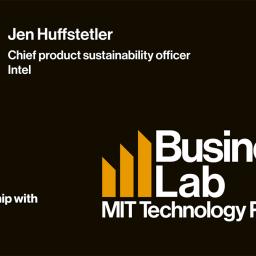 |
by MIT Technology Review Insights on (#6FSQB)
When performing radiation therapy treatment, accuracy is key. Typically, the process of targeting cancer-affected areas for treatment is painstakingly done by hand. However, integrating a sustainably optimized AI tool into this process can improve accuracy in targeting cancerous regions, save health care workers time, and consume 20% less power to achieve these improved results. This...
|
 |
by Rhiannon Williams on (#6FSMJ)
This is today's edition ofThe Download,our weekday newsletter that provides a daily dose of what's going on in the world of technology. The nonprofit that lets girls build the world they want to see Emily Pilloton-Lam didn't grow up in a particularly handy household, but she did spend hours outside building treehouses out of logs...
|
 |
by Tate Ryan-Mosley on (#6FSMK)
This article is from The Technocrat, MIT Technology Review's weekly tech policy newsletter about power, politics, and Silicon Valley. To receive it in your inbox every Friday, sign up here. Last week I published astoryabout government and technology that I spent the better part of this past year reporting, and I think all of you...
|
 |
by Allison Arieff on (#6FSJW)
Emily Pilloton-Lam didn't grow up in a particularly handy household, but she did spend hours and hours outside building treehouses out of logs and sticks: I was more a spatial and physical thinker," she says. And making spaces and changing my environment was one of the earliest ways I began to make sense of the...
|
 |
by Cassandra Willyard on (#6FQVC)
This article first appeared in The Checkup, MIT Technology Review's weekly biotech newsletter. To receive it in your inbox every Thursday, and read articles like this first,sign up here. A year or so ago, I talked with a man who said ketamine saved his life. He had been depressed, contemplating suicide, and then found a...
|
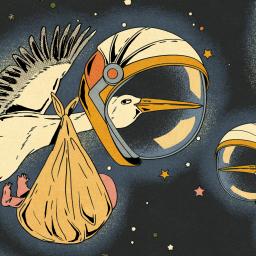 |
by Rhiannon Williams on (#6FQRY)
This is today's edition ofThe Download,our weekday newsletter that provides a daily dose of what's going on in the world of technology. This startup wants to find out if humans can have babies in space Despite the burgeoning interest in deep space exploration and settlement, prompted in part by billionaires such as Elon Musk and...
|
 |
by Scott Solomon on (#6FQPB)
Egbert Edelbroek was acting as a sperm donor when he first wondered whether it's possible to have babies in space. Curious about the various ways that donated sperm can be used, Edelbroek, a Dutch entrepreneur, began to speculate on whether in vitro fertilization technology was possible beyond Earth-or could even be improved by the conditions...
|
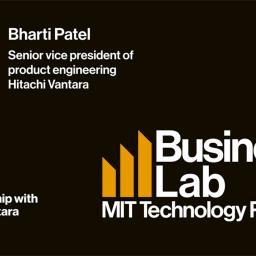 |
by MIT Technology Review Insights on (#6FPYR)
Data - how it's stored and managed - has become a key competitive differentiator. As global data continues to grow exponentially, organizations face many hurdles between piling up historical data, real-time data streams from IoT sensors, and building data-driven supply chains. Senior vice president of product engineering at Hitachi Vantara, Bharti Patel sees these challenges...
|
 |
by Rhiannon Williams on (#6FPRP)
This is today's edition ofThe Download,our weekday newsletter that provides a daily dose of what's going on in the world of technology. How Meta and AI companies recruited striking actors to train AI Between July and September this year, actors in the US were invited to participate in an unusual research project, designed to capture...
|
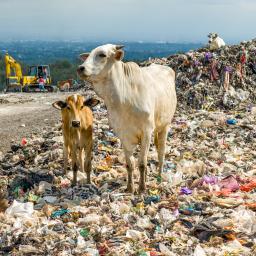 |
by Casey Crownhart on (#6FPPA)
This article is from The Spark, MIT Technology Review's weekly climate newsletter. To receive it in your inbox every Wednesday, sign up here. Plastic is a huge problem. There, I found it: the most uncontroversial thing I could possibly say to start a newsletter. We've all seen the images that illustrate the scale of the...
|
 |
by Eileen Guo on (#6FPPB)
One evening in early September, T, a 28-year-old actor who asked to be identified by his first initial, took his seat in a rented Hollywood studio space in front of three cameras, a director, and a producer for a somewhat unusual gig. The two-hour shoot produced footage that was not meant to be viewed by...
|
 |
by Stephen Ornes on (#6FPPC)
When we check email, log in to our bank accounts, or exchange messages on Signal, our passwords and credentials are protected through encryption, a locking scheme that uses secrets to disguise our data. It works like a cyber padlock: with the right key someone can unlock the data. Without it, they'll have to resort to...
|
 |
by MIT Technology Review Insights on (#6FNYM)
Posting just a six-second video on social media uses the same amount of power as boiling 22 gallons of water. This staggering statistic encapsulates just how intertwined data management is with sustainability. And as companies look to become data-driven and to gain insights from vast data streams, it's also crucial to keep an eye on...
|
 |
by Rhiannon Williams on (#6FNV3)
This is today's edition ofThe Download,our weekday newsletter that provides a daily dose of what's going on in the world of technology. Why New York City is embracing low-tech solutions to hard problems It's a reality of politics that is often overlooked: once a law is passed, it needs to evolve from an idea into...
|
 |
by Zeyi Yang on (#6FNPP)
This story first appeared in China Report, MIT Technology Review's newsletter about technology in China.Sign upto receive it in your inbox every Tuesday. Ever since the Chinese government passed a law on generative AI back in July, I've been wondering how exactly China's censorship machine would adapt for the AI era. The content produced by...
|
 |
by Tate Ryan-Mosley on (#6FNPR)
Every Tuesday, Jessica Ramgoolam heads down to the New Amsterdam branch of the New York City Public Library, sets up a small folding table, and takes a seat with her laptop. She lays out piles of paper flyers, and it's clear she has information to share, like a fortune teller awaiting a passing seeker. Just...
|
 |
by Soumya Sagar on (#6FNPQ)
This story is a subscriber exclusive A blueberry-size pill that you swallow could let doctors measure signs of inflammatory bowel disease in the gut, helping spot it earlier and measure its progression in real time. Nearly 70,000 people a year in the US are diagnosed with IBD, a class of conditions that includes Crohn's and...
|
 |
by Rhiannon Williams on (#6FMVB)
This is today's edition ofThe Download,our weekday newsletter that provides a daily dose of what's going on in the world of technology. How to fix the internet We're in a very strange moment for the internet. We all know it's broken. But there's a sense that things are about to change. The stranglehold that the...
|
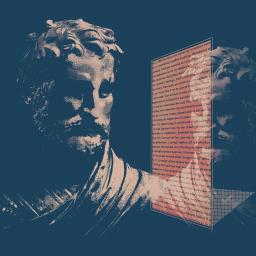 |
by Melissa Heikkilä on (#6FMPX)
This story originally appeared in The Algorithm, our weekly newsletter on AI. To get stories like this in your inbox first, sign up here. Many people in AI will be familiar with the story of the Mechanical Turk. It was a chess-playing machine built in 1770, and it was so good its opponents were tricked...
|
 |
by Katie Notopoulos on (#6FMPY)
We're in a very strange moment for the internet. We all know it's broken. That's not news. But there's something in the air-a vibe shift, a sense that things are about to change. For the first time in years, it feels as though something truly new and different might be happening with the way we...
|
 |
by MIT Technology Review Insights on (#6FM28)
Many industries have reached an inflection point with hybrid and remote work, emerging advanced technologies like AI and cloud computing, and increased demands for sustainable frameworks to mitigate emissions. According to Sandeep Dave, chief digital and technology officer at global firm CBRE, the commercial real estate industry is no stranger to these changes and challenges....
|
 |
by Rhiannon Williams on (#6FKV4)
This is today's edition ofThe Download,our weekday newsletter that provides a daily dose of what's going on in the world of technology. This biotech CEO decided to take her own (fertility) medicine When Dina Radenkovic, CEO of Gameto, a startup engineering stem cells to craft a lightweight version of IVF, injected herself with a needle...
|
 |
by Tate Ryan-Mosley on (#6FKRD)
This article is from The Technocrat, MIT Technology Review's weekly tech policy newsletter about power, politics, and Silicon Valley. To receive it in your inbox every Friday, sign up here. On October 9, Imoderated a panelon encryption, privacy policy, and human rights at the United Nations's annual Internet Governance Forum. I shared the stage with...
|
 |
by Antonio Regalado on (#6FKRE)
To be a great company founder, they say you should use your own product. Eat your own dog food. But what if you are running a biotech company developing an experimental fertility treatment? You might be excused. Not Dina Radenkovic, CEO of Gameto, a New York startup engineering stem cells to craft a lightweight" version...
|
 |
by Grace Huckins on (#6FKNZ)
David Chalmers was not expecting the invitation he received in September of last year. As a leading authority on consciousness, Chalmers regularly circles the world delivering talks at universities and academic meetings to rapt audiences of philosophers-the sort of people who might spend hours debating whether the world outside their own heads is real and...
|
 |
by Rhiannon Williams on (#6FHNH)
This is today's edition ofThe Download,our weekday newsletter that provides a daily dose of what's going on in the world of technology. Scientists just drafted an incredibly detailed map of the human brain Scientists have unveiled the most compete atlas of the human brain ever created. The work, part of the National Institutes of Health...
|
 |
by Elise Cutts on (#6FHK7)
It takes Gabor Domokos about an hour to pick his way up into the hills that rise over Budapest. He stops along the way to look for lizards and rescue a beetle that had gotten stuck on its back. If he were to keep going, he'd soon reach a tower with a panoramic view of...
|
 |
by Cassandra Willyard on (#6FH5B)
This article first appeared in The Checkup, MIT Technology Review's weekly biotech newsletter. To receive it in your inbox every Thursday, and read articles like this first,sign up here. When scientists first looked at brain tissue under a microscope, they saw an impenetrable and jumbled mess. Santiago Ramon y Cajal, the father of modern neuroscience,...
|
 |
by Charlotte Jee on (#6FGRC)
This is today's edition ofThe Download,our weekday newsletter that provides a daily dose of what's going on in the world of technology. Think that your plastic is being recycled? Think again. The problem of plastic waste hides in plain sight, a ubiquitous part of our lives we rarely question. But a closer examination of the...
|
 |
by Casey Crownhart on (#6FGNZ)
Sweeping legislation in the US, including the Inflation Reduction Act, is infusing hundreds of billions of dollars into new climate and energy technologies, funding research, development, and implementation. But as the money begins to flow, there are open questions regarding who will benefit most, and who might bear the brunt of unexpected consequences. Shalanda Baker,...
|
 |
by Casey Crownhart on (#6FGKB)
This article is from The Spark, MIT Technology Review's weekly climate newsletter. To receive it in your inbox every Wednesday, sign up here. During one of the final sessions at our ClimateTech event last week, I got to hear about how AI could help develop battery materials for future electric sports cars. This came during...
|
 |
by Douglas Main on (#6FGKC)
On a Saturday last summer, I kayaked up a Connecticut river from the coast, buoyed by the rising tide, to pick up trash with a group of locals. Blue herons and white egrets hunted in the shallows. Ospreys soared overhead hauling freshly caught fish. The wind combed the water into fields of ripples, refracting the...
|